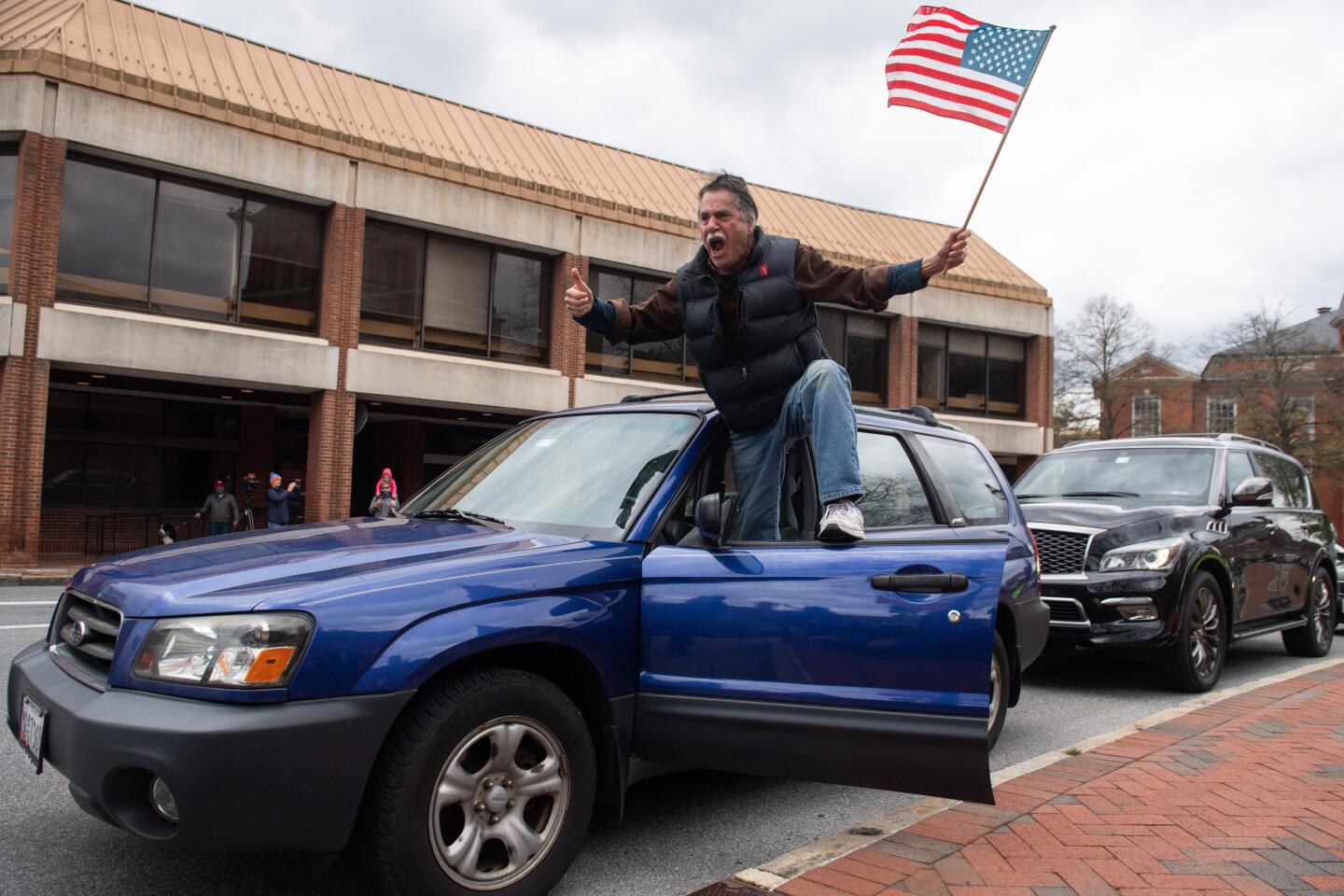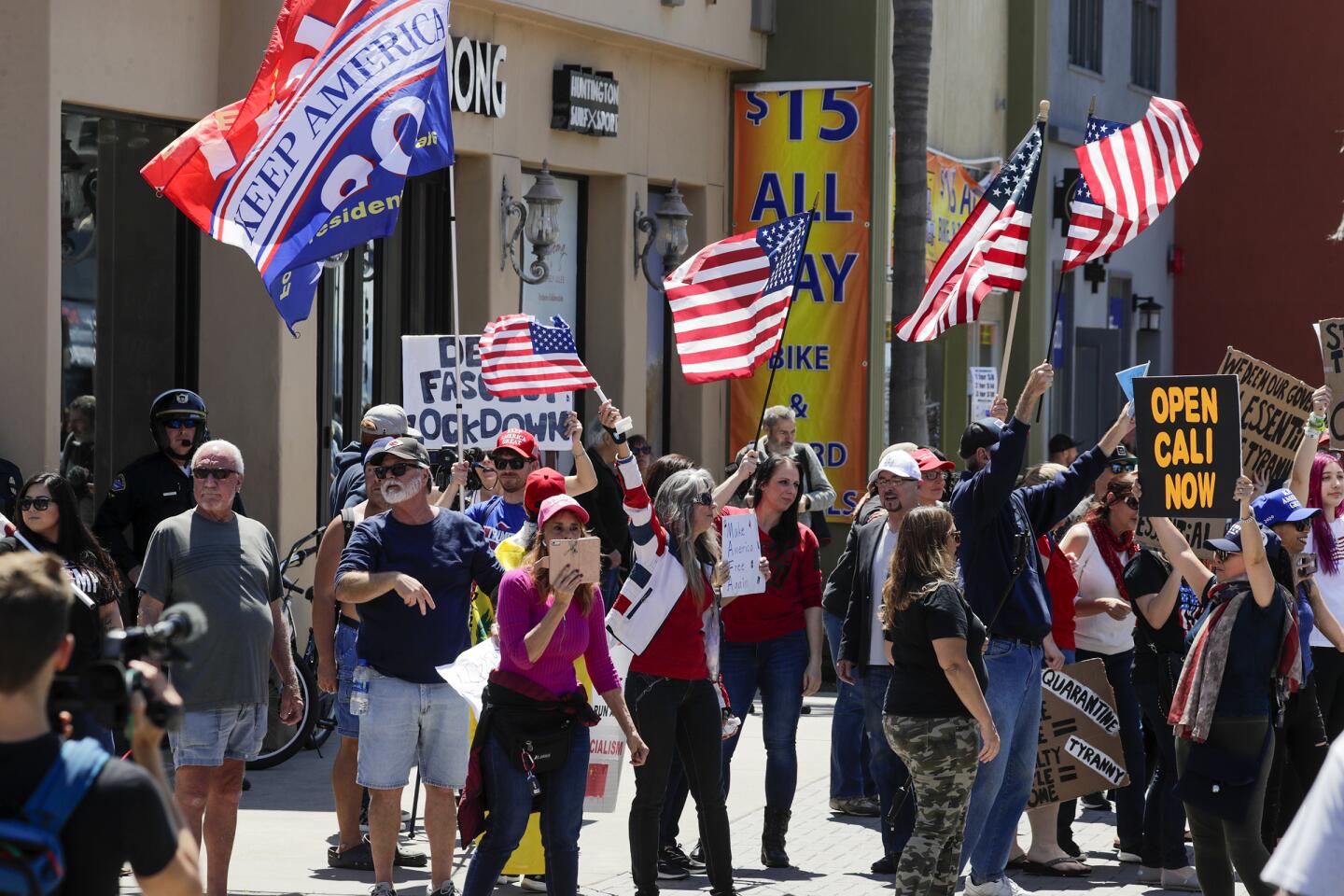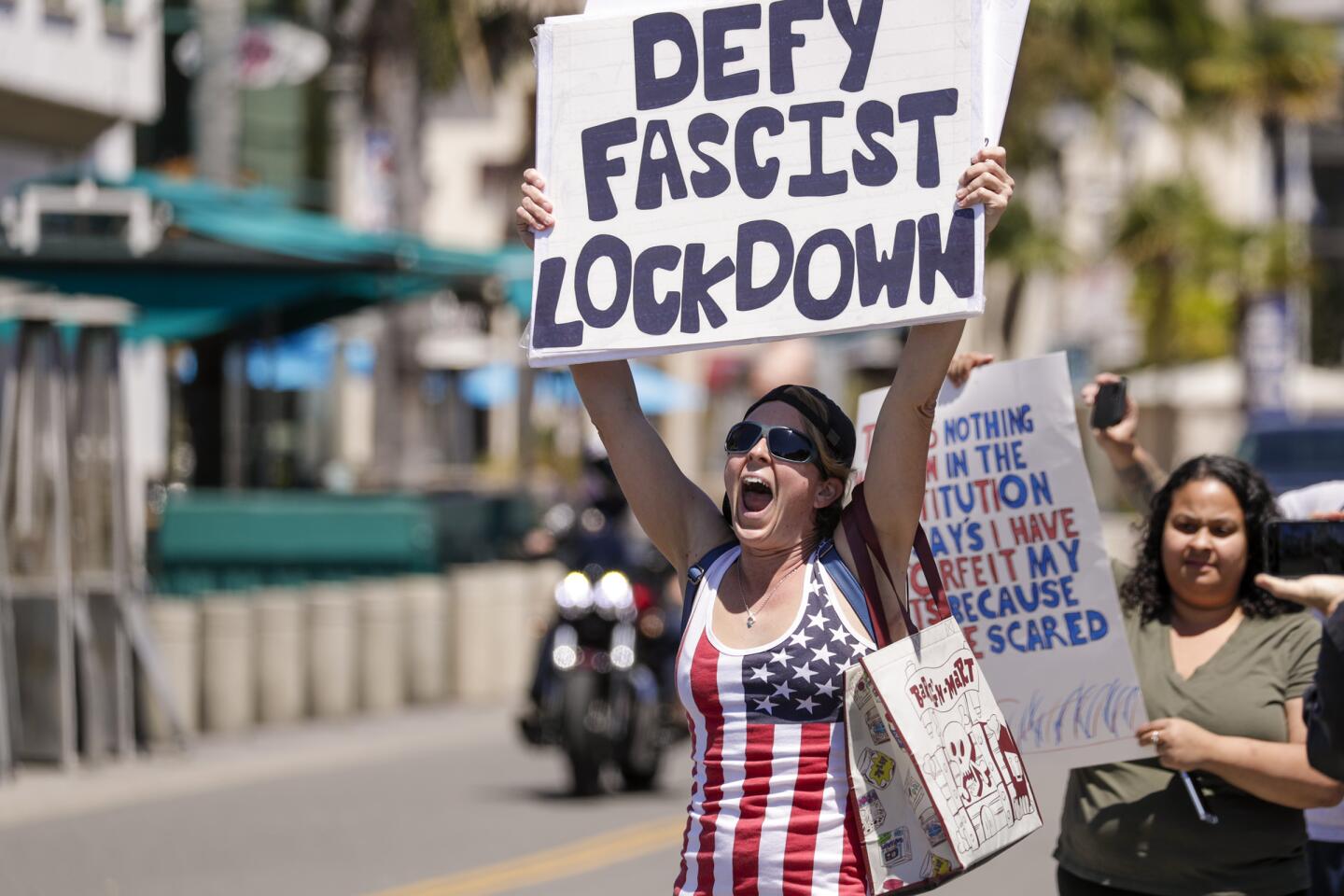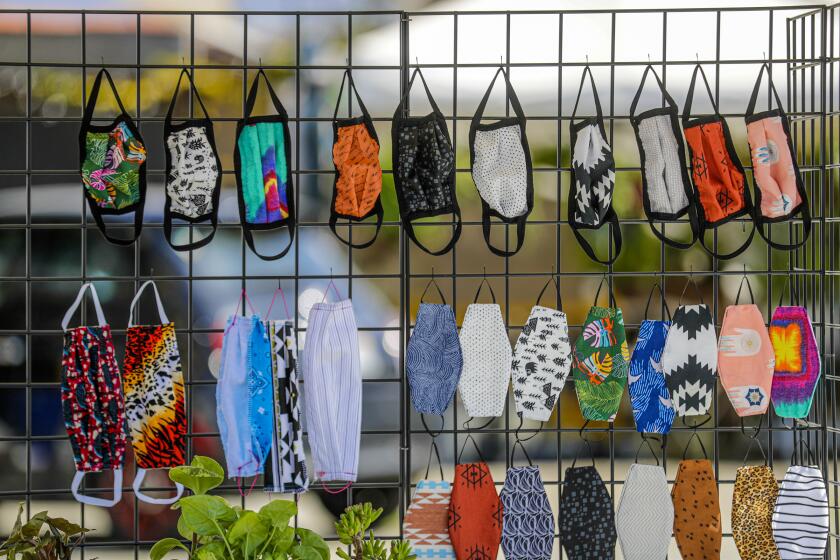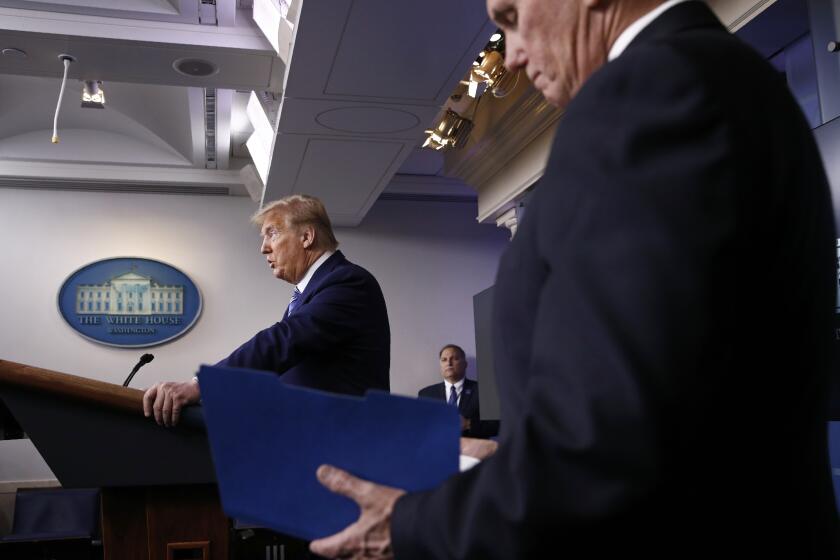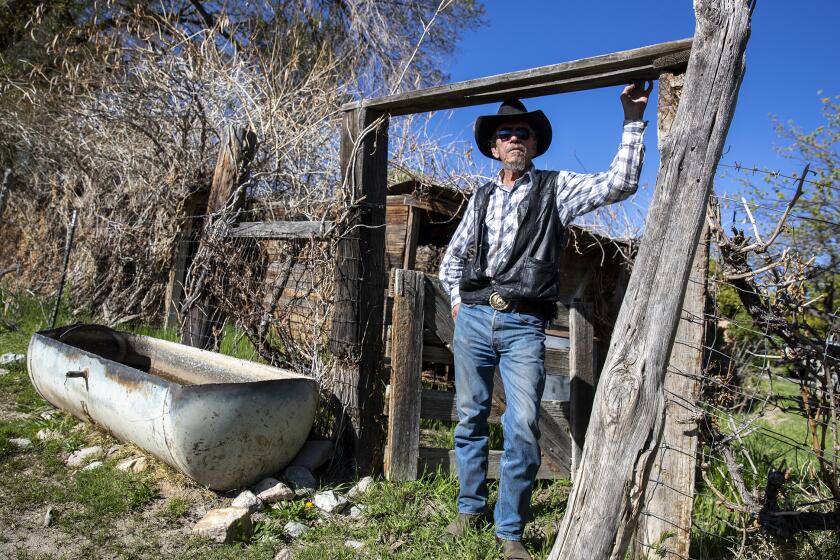As coronavirus restriction protests take place across U.S., Trump defends demonstrators

- Share via
President Trump on Saturday defended the mounting series of protests against coronavirus restrictions, saying some governors had overreached in their efforts to fight the pandemic — efforts that were based on the advice of leading health officials in his own administration.
“I really believe that they’re being unreasonable,” Trump said, citing the Democratic governors of Michigan and Virginia. “There are a lot of protests out there. And I just think that some of the governors have gotten carried away.”
Trump faulted Michigan Gov. Gretchen Whitmer for following closure and social-distancing guidance that came from his administration, and Virginia Gov. Ralph Northam for gun-control measures he signed more than a week ago that have nothing to do with the coronavirus.
Trump spoke hours after protests took place in Texas, Maryland, Indiana, Nevada and Wisconsin against ongoing stay-at-home restrictions enacted to fight the spread of the coronavirus. Several such demonstrations have already taken place across the country in recent days, including in California, Michigan, Ohio and New Jersey.
On Saturday in downtown Annapolis, Md., dozens in their vehicles drove in circles and honked during a lunchtime protest. One woman waved a sign out her window that said, “I want to save my business!!! I need to work!” Another man scrawled on his pickup truck, “The face mask you were duped into wearing symbolizes you loosing your freedom of speech.”
Outside the Texas Statehouse in Austin, protesters chanted, “Fire Fauci!” referring to Dr. Anthony Fauci, the top U.S. infectious disease expert who is widely credited with influencing President Trump’s approach to the coronavirus pandemic. Right-wing conspiracy theorist Alex Jones made an appearance.
More demonstrations are scheduled for the upcoming week, including a “drive-in” protest in Wisconsin that is being planned by TV commentator Stephen Moore, who is on Trump’s task force charged with helping reopen the nation’s economy. He has repeatedly compared coronavirus restriction protesters to civil rights icon Rosa Parks.
“I call these people the modern-day Rosa Parks — they are protesting against injustice and a loss of liberties,” Moore told the Washington Post earlier in the week.
Asked about the comparison, Trump replied, “There is a lot of injustice.”
“I could see where he’s coming from. I think it’s a strong statement, strong statement because hopefully this will be over very soon for all of us.”
Coronavirus cases in California topped 30,000, with nearly 1,150 deaths, as officials said science would determine when they lifted restrictions.
The protests come when governors are weighing measures for reopening their economies without easing restrictions so quickly that they risk a new surge of infections, and without adequate testing capability. On Friday, Florida allowed some beaches to reopen — resulting in throngs crowding Jacksonville shorelines not wearing masks or practicing social distancing. Texas announced plans to ease some restrictions in coming days.
Trump, after claiming sole authority over such matters and later reversing course and saying he was leaving such decisions up to the states, seemed to encourage protests Friday when he took to Twitter and wrote “LIBERATE” three states led by Democratic governors. Protests have already taken place in the states — Michigan, Minnesota and Virginia — and Trump later defended the protesters.
“These are people expressing their views ... they seem to be very responsible people to me,” Trump said during his evening White House briefing Friday when asked whether he was worried that the gatherings could further spread the deadly virus.
National polls indicate that the protesters do not reflect most Americans’ views. A Pew poll released Thursday found that 66% of Americans were concerned about lifting restrictions too quickly; 32% were concerned that they were not being lifted quickly enough.
President Trump has pushed for the the U.S. to reopen amid the COVID-19 pandemic. But many state leaders say coronavirus testing lags too far behind to do it safely right now.
And some officials were increasing or extending restrictions Saturday. Hawaii’s governor ordered all the state’s beaches closed except for swimming and other socially distanced water activities. The Navajo Nation, the Native American tribe hardest hit by the coronavirus, ordered all people in public to wear masks on its reservation, which includes portions of Arizona, New Mexico and Utah. Florida announced school would be closed for the remainder of the academic year.
More than 37,000 people have died from COVID-19 in the United States, with more than a third of the victims in New York state.
New York Gov. Andrew Cuomo made an impassioned plea Saturday for the nation to remain united as it fights the pandemic.
“The emotion in this country is as high as I can recall, people are frustrated, we’re anxious, we’re scared, we’re angry,” Cuomo said during his daily briefing, emphasizing that the crisis is mentally and economically devastating. “Look, if you have partisan divisions splitting this nation now, it’s going to make it worse. … This is no time, and no place for division. We have our hands full as it is. Let’s just stay together, and let’s work it through.”
Locals share coronavirus conspiracy theories along Route 93 in rural Nevada
Cuomo reported 540 new deaths Saturday morning, the lowest toll in several days. He also said that hospitalizations and intubations had declined. But he warned that 2,000 new cases are still being diagnosed or resulting in hospitalization daily, and that his state lacks the ability to do the type of widespread testing and tracking necessary for its economy to fully reopen. Cuomo repeated his plea for aid from the federal government, but did not lace into Trump as he did the previous day.
“Nobody wants to reopen more than me. Nobody wants to get the economy going more than me. Nobody wants to get on with life more than me,” he said Saturday. “The tension on reopening is how fast can you reopen and what can you reopen without raising that infection rate so you go right back to where we were.”
More to Read
Sign up for Essential California
The most important California stories and recommendations in your inbox every morning.
You may occasionally receive promotional content from the Los Angeles Times.

